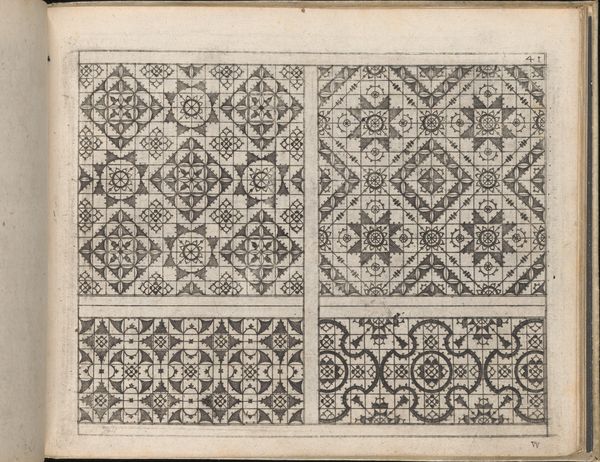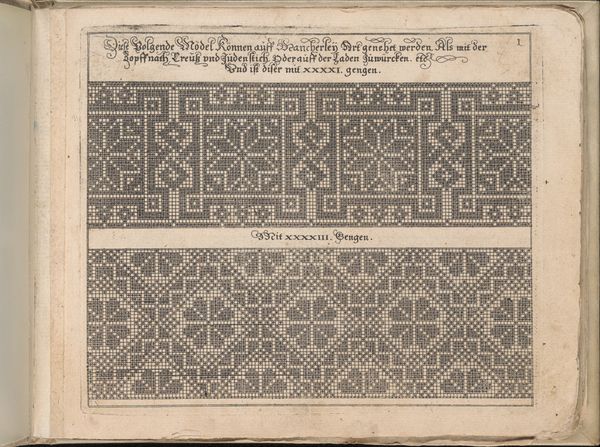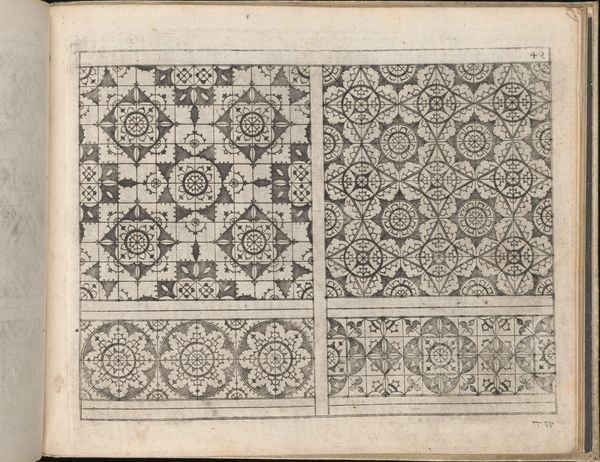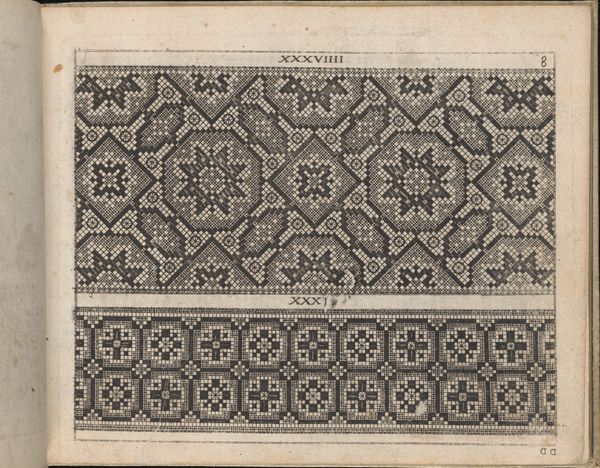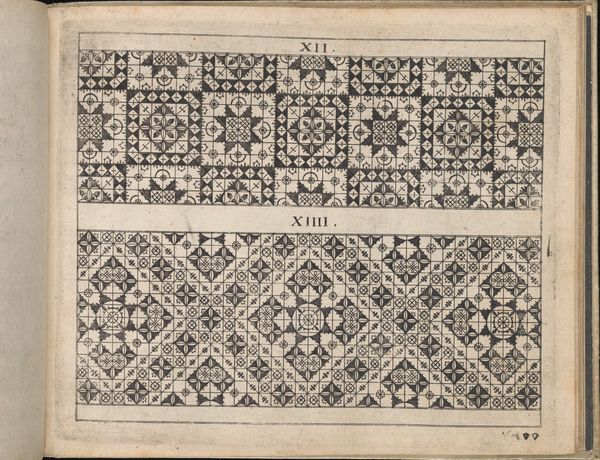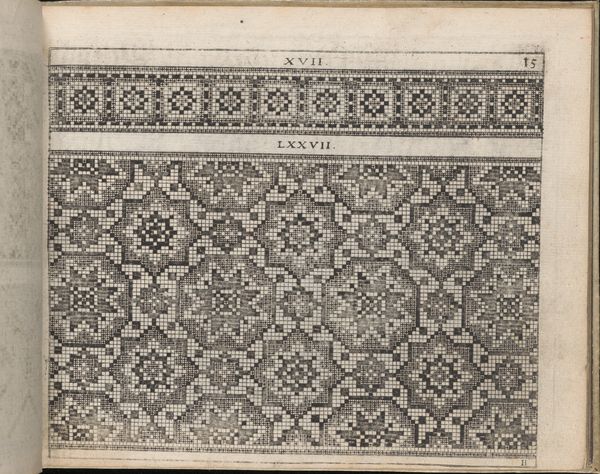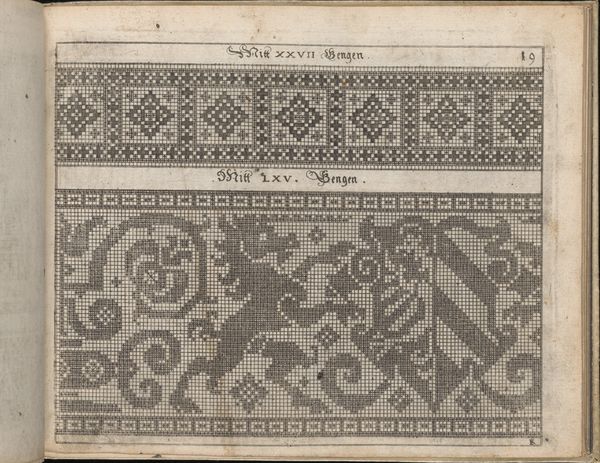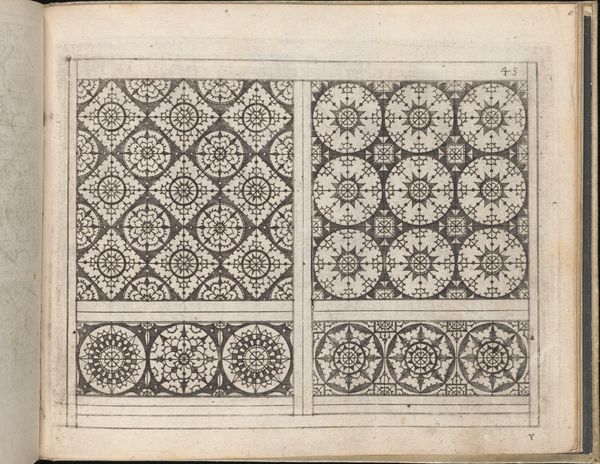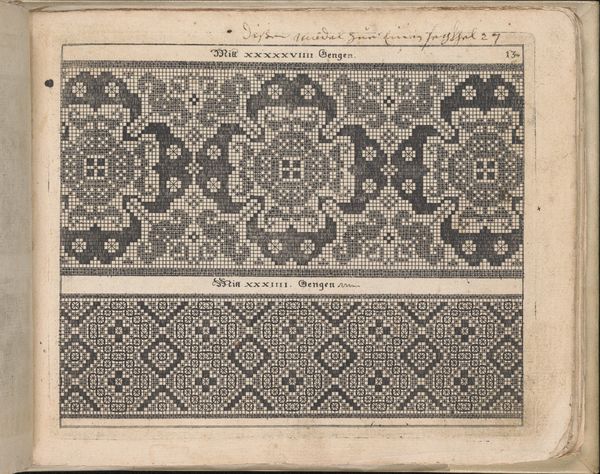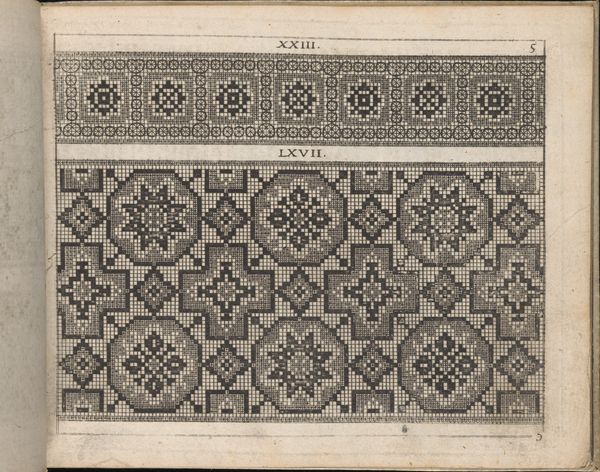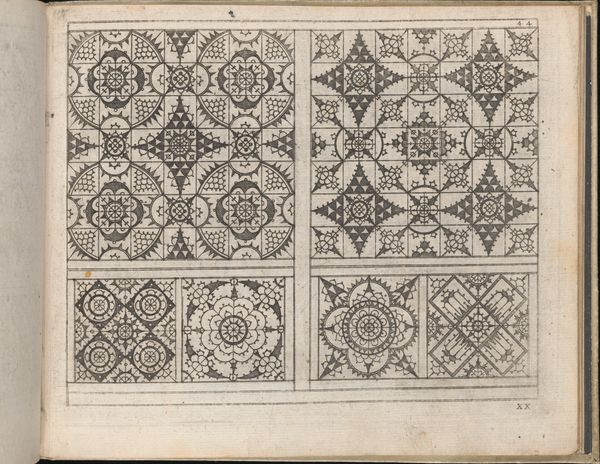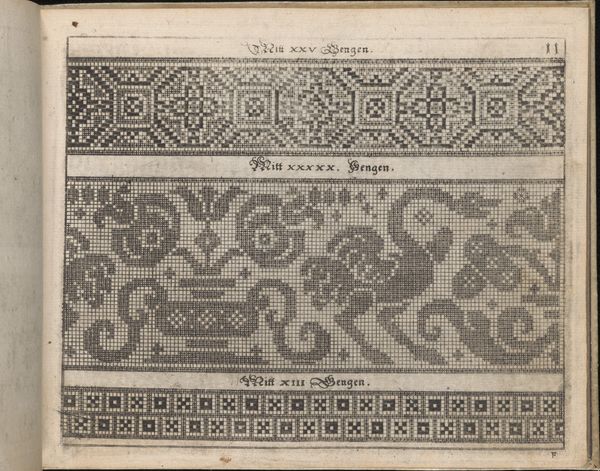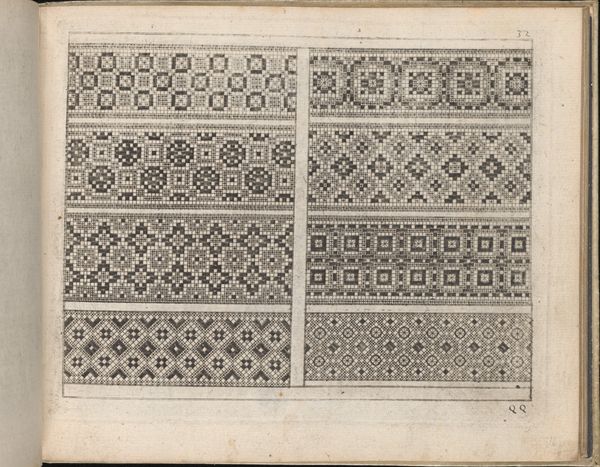
drawing, ornament, print, paper, woodcut
#
drawing
#
ornament
# print
#
book
#
paper
#
11_renaissance
#
geometric
#
woodcut
#
decorative-art
Dimensions: Overall: 5 11/16 x 7 1/16 x 3/4 in. (14.5 x 18 x 1.9 cm)
Copyright: Public Domain
Editor: Here we have a page from Johann Sibmacher's "Newes Modelbuch in Kupffer," dating back to 1604. It's a woodcut print on paper, filled with intricate geometric designs. The sheer density of pattern is what strikes me first. What do you make of this work, looking at its formal qualities? Curator: Indeed. Consider first the organization of the page itself. We observe a clear division, almost a binary opposition, between the larger, more elaborate pattern above and the smaller studies below. This establishes a visual hierarchy, guiding the eye to the complexity of the overall design before focusing on its constituent parts. Notice the deployment of geometric forms - circles, squares, and connecting lines - how they interact, creating a harmonious balance across the page. The textures resulting from the woodcut process itself are another key aspect. Editor: The textures are interesting. Does the repetition contribute anything further, perhaps visually? Curator: Repetition is absolutely vital to understanding this print. The repeated motifs – the rosettes, the latticework – generate a sense of rhythm, almost a visual pulse. Look carefully at how slight variations within the repeated elements disrupt perfect uniformity, preventing the pattern from becoming monotonous. Instead, a dynamic interplay emerges, engaging the viewer's attention. Note the tonal variations, light versus dark, and how the shapes interlock in layered complexities to convey both surface and depth. Editor: That's fascinating! I hadn't considered the disruptions in the patterns, but they definitely give it more life. It’s less about strict representation and more about the abstract arrangements of form, right? Curator: Precisely. The value lies not in any symbolic content, but rather in the arrangement, texture, tone and variations of the core visual elements and what the artist did with that to express what lies at the very edge of possibility. This piece compels us to focus on visuality, not the cultural associations one might apply today. Editor: This close reading has revealed intricacies I would’ve overlooked. I’m learning how much one can unpack from pure observation! Curator: As am I; there are a wealth of semiotic relationships and arrangements for the modern artist to examine in Johann Sibmacher's work.
Comments
No comments
Be the first to comment and join the conversation on the ultimate creative platform.
